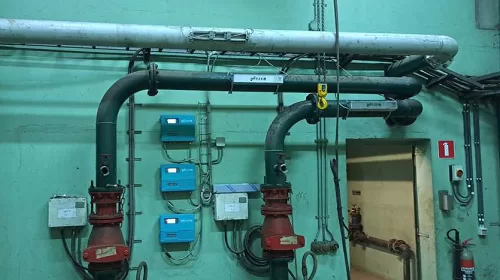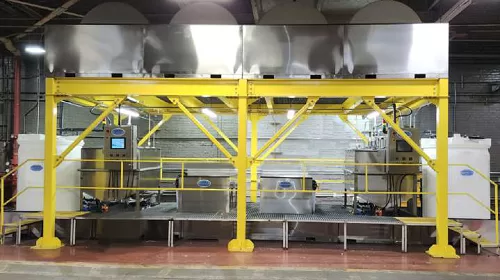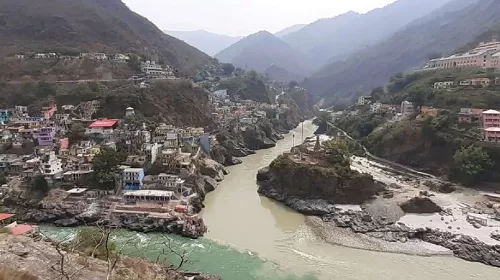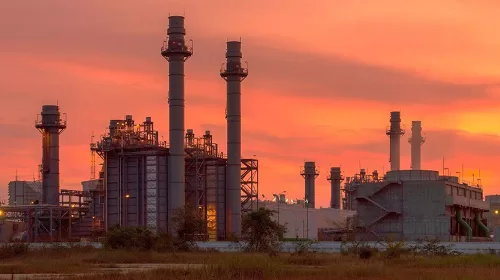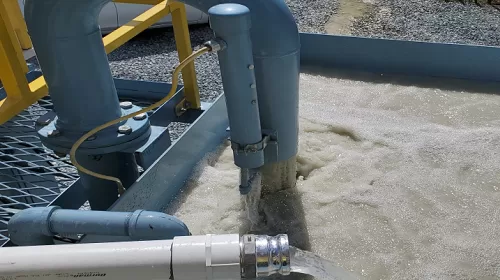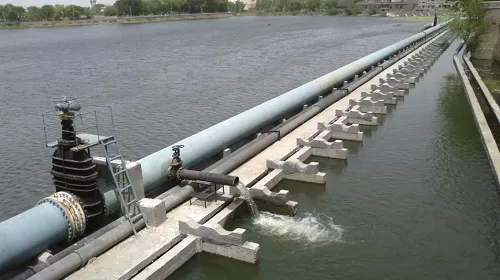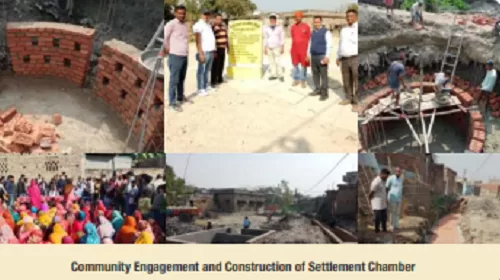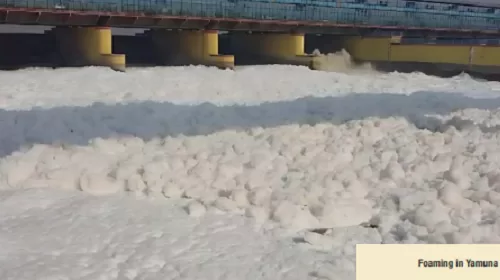Polluted water from motorways and highways is a significant environmental concern, contributing to the degradation of aquatic ecosystems and posing risks to human health. When vehicles travel on these roads, they deposit various pollutants such as oil, heavy metals, and tyre particles. Rainwater washes these contaminants into nearby waterways, resulting in polluted runoff. This runoff can then lead to the deterioration of water quality, harm aquatic life, and disrupt natural habitats. CLAMP-ON ULTRASONIC FLOW MEASUREMENT– AN INNOVATIVE SOLUTION One innovative solution to monitor and manage this runoff is clamp-on ultrasonic…
Read MoreCategory: Case Study
Industrial Wastewater Treatment: Tailored Solutions for Unique Wastewater Challenges
Every company’s wastewater stream is unique, based on their industry, inputs, outputs, processes, volumes, discharge parameters, and seasonal variables, as well as federal EPA, state, and local regulations. Consequently, their wastewater treatment often must be tailored to their specific needs to avoid violations and fines and reliably remain in compliance. Industrial wastewater is often contaminated with a wide range of pollutants, including suspended solids, heavy metals, and organic compounds. Many treatment methods require multiple steps, a variety of chemicals, or extensive labor to achieve even marginally acceptable results. Additionally, the…
Read MoreSABESP Establishes Open, Connected Hydraulic Modeling Environment For São Paulo: OpenFlows Helped Establish A Digital Twin Solution That Resulted In 30% Reduction In Overflows And Backflows
KEEPING WATER FLOWING IN SÃO PAULO Companhia de Saneamento Básico do Estado de São Paulo (SABESP) provides 28.4 million people with water and 25.2 million people with sewage collection daily. The organization also provides water and sewerage services to over 50% of the state’s municipalities. The largest water and wastewater management company in Latin America, SABESP seeks to provide its customers with unparalleled operational excellence through the latest technology and a focus on sustainability. To meet these goals for its customers, SABESP created Integra 4.0, an initiative to innovate water…
Read MoreCase Study: Partnering for Progress: KISTERS and CPCB’s Water Quality Success Story
INTRODUCTION KISTERS AG, a global leader in environmental monitoring and IT solutions, has been at the forefront of tackling water quality challenges worldwide. In India, KISTERS and SGS Weather and Environment, collaborates with the Central Pollution Control Board (CPCB), which has appointed KISTERS as the data qualification service consultant for real-time water quality monitoring stations installed along the Holy Ganga River. This partnership is a part of India’s broader efforts to rejuvenate its water resources, ensuring clean water for millions of people while supporting economic growth and ecological health. KISTERS…
Read MoreTubli Water Distribution Network, Bahrain
Grundfos Pumps India Pvt. Ltd. Bahrain’s Water Challenges: An Overview In the Kingdom of Bahrain, one of the world’s most arid regions, water is as precious as gold. The region faces multiple challenges on the water front, such as inadequate water supply, groundwater depletion and poor water quality. These hardships also make it one of the most water-stressed regions in the world. While Bahrain’s economic engine is powered by the oil and natural gas sector, it is also driven by its agricultural sector that relies heavily on water. Hence there…
Read MoreProper Polymer System Selection results in Cleaner Water: The Appropriate Selection of Polymer and a Make-Down System Improves the Water Clarification Process and significantly reduces costs
By Del Williams, Technical Writer Based in Torrance, California To help comply with EPA wastewater regulations and reclaim valuable resources, chemical polymers are added to industrial clarifiers, settling ponds, and other wastewater equipment at various stages of treatment. These polymers promote flocculation, a process in which small particles clump together into larger particles called flocs, which settle to the bottom. The clarified water can then be discharged for re-use, disposal, or further treatment. The problem with this highly effective and economical method of removing suspended solids from wastewater is that…
Read MoreAddressing Water Scarcity Through River Interlinking
By Subhash Sethi, Chairman, SPML Infra Limited Water is the lifeblood of social and industrial progress, yet India faces a severe and escalating water crisis. Despite having 18% of the world’s population, the country possesses only 4% of global freshwater resources, leading to a significant water imbalance. This challenge is further intensifying due to rapid urbanization, continuous population growth, rising industrial expansion, and climate change events, which impact rainfall patterns and resulting in water scarcity. India is also the largest consumer of groundwater, extracting approximately 230 billion cubic meters annually.…
Read MoreRevitalizing Village Sanitation: A Success Story From East Champaran
In the heart of East Champaran district’s Sugauli block lies the village panchayat of Dakshini Sugaon, where a significant success story has taken place. The village, particularly wards number 02 and 03, was plagued by a public drain that had become a source of distress for its residents. The accumulation of dirt and waterlogging led to a polluted environment, exacerbating the spread of waterborne diseases and affecting the daily lives of the villagers. For much of the year, especially during the monsoon season, the public drain collected rainwater, which turned…
Read MoreInnovative Solutions for a Municipal Wastewater Treatment Plant
The problem Recently, a local water activist brought to public attention a disturbing phenomenon occurring in the Yamuna River in Delhi, India: vast quantities of white foam were polluting the sacred waterway. The source of this foam was traced not to a single plant, but to multiple municipal wastewater treatment plant along the river. While these plants were treating the water, the discharge process itself was contributing to the problem. Treated water, flowing through channels at high rates, intersected with the city drains at points where there were steep falls.…
Read MoreTurning seawater into Gold: An alternative to Desalination Plants
ABSTRACT This article explores an innovative and economical greenhouse technique that utilizes solar radiation and wind to simulate an artificial hydrologic cycle for harvesting pure water and minerals from seawater. The method employs simple and sustainable technology to evaporate seawater, condense the vapor into pure water, and collect precipitated minerals for further processing. Compared to conventional desalination plants, this approach offers a cost-effective and environmentally friendly solution for addressing global water and mineral needs. The article outlines the methodology, theoretical foundation, financial analysis, and schematic design of this technique. INTRODUCTION…
Read More

